
Animal eco-warriors to the rescue
Biosecurity beagles in Hobart, dogs sniffing out orange hawkweed in the alps and a terrier with a penchant for cat eradication are just some of the animal eco-warriors you will meet in a new book by Nic Gill.

Biosecurity beagles in Hobart, dogs sniffing out orange hawkweed in the alps and a terrier with a penchant for cat eradication are just some of the animal eco-warriors you will meet in a new book by Nic Gill.
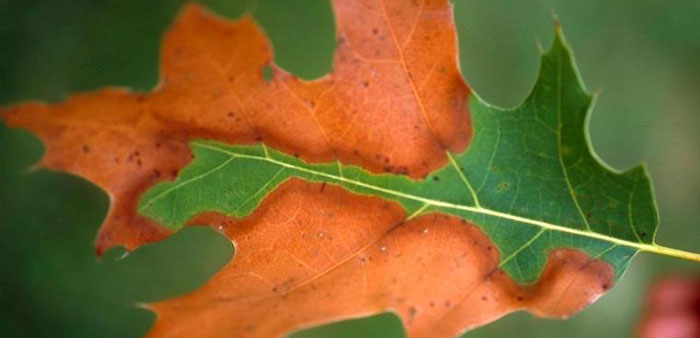
Last year it was listed as Australia’s Number 1 National Priority Plant Pest, but how many of you have ever heard about Xylella fastidiosa? And could it threaten our native plants?
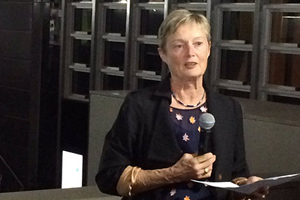
Last year the New Zealand government announced plans to be predator free by 2050, a challenging concept for the many Australians gathered at the Australasian Vertebrate Pest Management
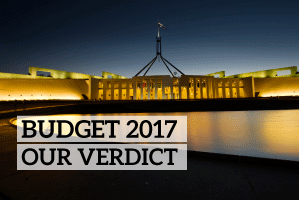
Despite containing funds for fire ant eradication, the 2017 federal budget was a disappointing, missed opportunity for environmental biosecurity in Australia.
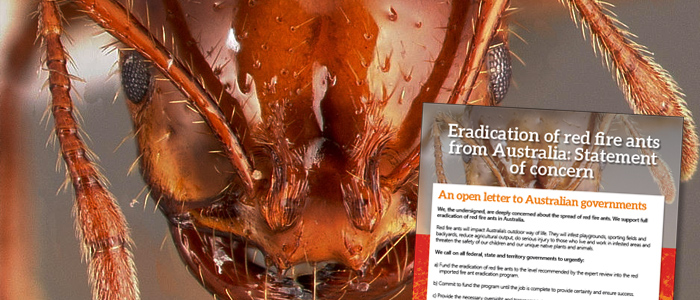
Farmers, local government and environment groups are calling on every state, territory and the federal government to fully fund eradication of deadly red fire ants in this year’s budgets.

A new report reveals that feral animals and diseases introduced into Australia pose a greater ongoing threat to the nation’s most vulnerable native animals than habitat loss.

After spending a week travelling across Australia with Texan Dr Robert Puckett we can only conclude that he was the perfect person to explain the hellish nature of living with fire ants.
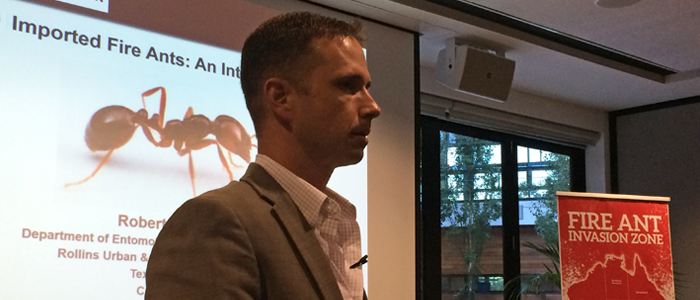
All governments must come to a unanimous decision to boosted funding for red fire ant eradication. So how close are we to getting the unanimous support needed?

US fire ant expert Dr Robert Puckett arrives in Australia today as part of a national tour of Australia to warn the country that it needs to act immediately to get rid of the super pest.
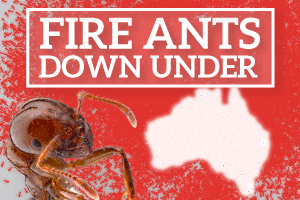
We’ve just received confirmation that US fire ant expert Dr Robert Puckett will join our Fire Ants Down Under tour next month, visiting five capital Australian cities in just one week.
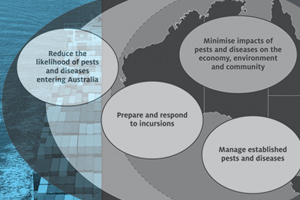
Environmental invaders continue to slip into Australia, raising threat levels for our native plants and animals, but are governments finally waking up to the need for tougher environmental biosecurity?

What would it be like living in an Australia overrun by infestations of red fire ants? Find out why these menacing ants represent such a huge threat at one of our upcoming fire ant forums.

What would it be like living in an Australia overrun by infestations of red fire ants? Find out why these menacing ants represent such a huge threat at one of our upcoming fire ant forums.
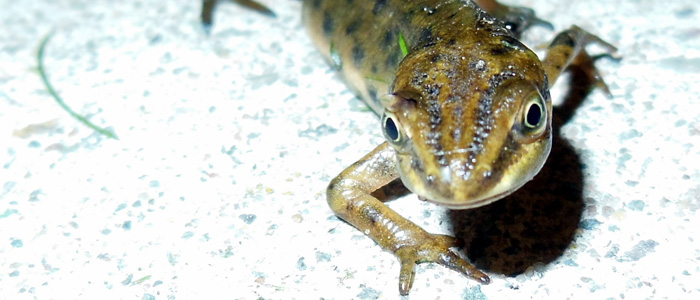
The creation of a new national body geared towards preparing Australia for future environmental invasions is just one idea thrown up at the first ever environmental biosecurity forum.

Has the Australian Government given up on tackling weeds and feral animals? New draft strategies contain no actions and no new initiatives. They are devoid of substance.

Biosecurity beagles in Hobart, dogs sniffing out orange hawkweed in the alps and a terrier with a penchant for cat eradication are just some of the animal eco-warriors you will meet in a new book by Nic Gill.

Last year it was listed as Australia’s Number 1 National Priority Plant Pest, but how many of you have ever heard about Xylella fastidiosa? And could it threaten our native plants?

Last year the New Zealand government announced plans to be predator free by 2050, a challenging concept for the many Australians gathered at the Australasian Vertebrate Pest Management

Despite containing funds for fire ant eradication, the 2017 federal budget was a disappointing, missed opportunity for environmental biosecurity in Australia.

Farmers, local government and environment groups are calling on every state, territory and the federal government to fully fund eradication of deadly red fire ants in this year’s budgets.

A new report reveals that feral animals and diseases introduced into Australia pose a greater ongoing threat to the nation’s most vulnerable native animals than habitat loss.

After spending a week travelling across Australia with Texan Dr Robert Puckett we can only conclude that he was the perfect person to explain the hellish nature of living with fire ants.

All governments must come to a unanimous decision to boosted funding for red fire ant eradication. So how close are we to getting the unanimous support needed?

US fire ant expert Dr Robert Puckett arrives in Australia today as part of a national tour of Australia to warn the country that it needs to act immediately to get rid of the super pest.

We’ve just received confirmation that US fire ant expert Dr Robert Puckett will join our Fire Ants Down Under tour next month, visiting five capital Australian cities in just one week.

Environmental invaders continue to slip into Australia, raising threat levels for our native plants and animals, but are governments finally waking up to the need for tougher environmental biosecurity?

What would it be like living in an Australia overrun by infestations of red fire ants? Find out why these menacing ants represent such a huge threat at one of our upcoming fire ant forums.

What would it be like living in an Australia overrun by infestations of red fire ants? Find out why these menacing ants represent such a huge threat at one of our upcoming fire ant forums.

The creation of a new national body geared towards preparing Australia for future environmental invasions is just one idea thrown up at the first ever environmental biosecurity forum.

Has the Australian Government given up on tackling weeds and feral animals? New draft strategies contain no actions and no new initiatives. They are devoid of substance.

Biosecurity beagles in Hobart, dogs sniffing out orange hawkweed in the alps and a terrier with a penchant for cat eradication are just some of the animal eco-warriors you will meet in a new book by Nic Gill.

Last year it was listed as Australia’s Number 1 National Priority Plant Pest, but how many of you have ever heard about Xylella fastidiosa? And could it threaten our native plants?

Last year the New Zealand government announced plans to be predator free by 2050, a challenging concept for the many Australians gathered at the Australasian Vertebrate Pest Management

Despite containing funds for fire ant eradication, the 2017 federal budget was a disappointing, missed opportunity for environmental biosecurity in Australia.

Farmers, local government and environment groups are calling on every state, territory and the federal government to fully fund eradication of deadly red fire ants in this year’s budgets.

A new report reveals that feral animals and diseases introduced into Australia pose a greater ongoing threat to the nation’s most vulnerable native animals than habitat loss.

After spending a week travelling across Australia with Texan Dr Robert Puckett we can only conclude that he was the perfect person to explain the hellish nature of living with fire ants.

All governments must come to a unanimous decision to boosted funding for red fire ant eradication. So how close are we to getting the unanimous support needed?

US fire ant expert Dr Robert Puckett arrives in Australia today as part of a national tour of Australia to warn the country that it needs to act immediately to get rid of the super pest.

We’ve just received confirmation that US fire ant expert Dr Robert Puckett will join our Fire Ants Down Under tour next month, visiting five capital Australian cities in just one week.

Environmental invaders continue to slip into Australia, raising threat levels for our native plants and animals, but are governments finally waking up to the need for tougher environmental biosecurity?

What would it be like living in an Australia overrun by infestations of red fire ants? Find out why these menacing ants represent such a huge threat at one of our upcoming fire ant forums.

What would it be like living in an Australia overrun by infestations of red fire ants? Find out why these menacing ants represent such a huge threat at one of our upcoming fire ant forums.

The creation of a new national body geared towards preparing Australia for future environmental invasions is just one idea thrown up at the first ever environmental biosecurity forum.

Has the Australian Government given up on tackling weeds and feral animals? New draft strategies contain no actions and no new initiatives. They are devoid of substance.
Get our blog the Feral Herald delivered to your inbox.

The Invasive Species Council was formed in 2002 to seek stronger laws, policies and programs to protect nature from harmful pests, weeds and diseases.
The Invasive Species Council acknowledges the Traditional Custodians throughout Australia and their connections to land and sea. We pay our respect to their Elders past and present and extend that respect to all Aboriginal and Torres Strait Islander peoples today.
Our protected areas are being trashed, trampled, choked and polluted by an onslaught of invaders. Invasive species are already the overwhelming driver of our animal extinction rate, and are expected to cause 75 of the next 100 extinctions.
But you can help to turn this around and create a wildlife revival in Australia.
From numbats to night parrots, a tax-deductible donation today can help defend our wildlife against the threat of invasive weeds, predators, and diseases.
As the only national advocacy environment group dedicated to stopping this mega threat, your gift will make a big difference.
A silent crisis is unfolding across Australia. Every year, billions of native animals are hunted and killed by cats and foxes. Fire ants continue to spread and threaten human health. And the deadly strain of bird flu looms on the horizon. Your donation today will be used to put the invasive species threat in the media, make invasive species a government priority, ensure governments take rapid action to protect nature and our remarkable native wildlife from invasives-led extinction, death and destruction.
If you are having trouble submitting a form, please read this guide.
Please fill out the following form and one of our team will be in contact to assist as soon as possible. Please make sure to include any helpful information, such as the device you were using (computer, tablet or mobile phone) and if known, your browser (Mozilla Firefox, Chrome, Safari etc)
"*" indicates required fields
Dear Project Team,
[YOUR PERSONALISED MESSAGE WILL APPEAR HERE.]
I support the amendment to the Kosciuszko National Park Wild Horse Heritage Management Plan to allow our incredible National Parks staff to use aerial shooting as one method to rapidly reduce feral horse numbers. I want to see feral horse numbers urgently reduced in order to save the national park and our native wildlife that live there.
The current approach is not solving the problem. Feral horse numbers have rapidly increased in Kosciuszko National Park to around 18,000, a 30% jump in just the past 2 years. With the population so high, thousands of feral horses need to be removed annually to reduce numbers and stop our National Park becoming a horse paddock. Aerial shooting, undertaken humanely and safely by professionals using standard protocols, is the only way this can happen.
The government’s own management plan for feral horses states that ‘if undertaken in accordance with best practice, aerial shooting can have the lowest negative animal welfare impacts of all lethal control methods’.
This humane and effective practice is already used across Australia to manage hundreds of thousands of feral animals like horses, deer, pigs, and goats.
Trapping and rehoming of feral horses has been used in Kosciuszko National Park for well over a decade but has consistently failed to reduce the population, has delayed meaningful action and is expensive. There are too many feral horses in the Alps and not enough demand for rehoming for it to be relied upon for the reduction of the population.
Fertility control as a management tool is only effective for a small, geographically isolated, and accessible population of feral horses where the management outcome sought is to maintain the population at its current size. It is not a viable option to reduce the large and growing feral horse population in the vast and rugged terrain of Kosciuszko National Park.
Feral horses are trashing and trampling our sensitive alpine ecosystems and streams, causing the decline and extinction of native animals. The federal government’s Threatened Species Scientific Committee has stated that feral horses ‘may be the crucial factor that causes final extinction’ for 12 alpine species.
I recognise the sad reality that urgent and humane measures are necessary to urgently remove the horses or they will destroy the Snowies and the native wildlife that call the mountains home. I support a healthy national park where native species like the Corroboree Frog and Mountain Pygmy Possum can thrive.
Dear Project Team,
[YOUR PERSONALISED MESSAGE WILL APPEAR HERE.]
I support the amendment to the Kosciuszko National Park Wild Horse Heritage Management Plan to allow our incredible National Parks staff to use aerial shooting as one method to rapidly reduce feral horse numbers. I want to see feral horse numbers urgently reduced in order to save the national park and our native wildlife that live there.
The current approach is not solving the problem. Feral horse numbers have rapidly increased in Kosciuszko National Park to around 18,000, a 30% jump in just the past 2 years. With the population so high, thousands of feral horses need to be removed annually to reduce numbers and stop our National Park becoming a horse paddock. Aerial shooting, undertaken humanely and safely by professionals using standard protocols, is the only way this can happen.
The government’s own management plan for feral horses states that ‘if undertaken in accordance with best practice, aerial shooting can have the lowest negative animal welfare impacts of all lethal control methods’.
This humane and effective practice is already used across Australia to manage hundreds of thousands of feral animals like horses, deer, pigs, and goats.
Trapping and rehoming of feral horses has been used in Kosciuszko National Park for well over a decade but has consistently failed to reduce the population, has delayed meaningful action and is expensive. There are too many feral horses in the Alps and not enough demand for rehoming for it to be relied upon for the reduction of the population.
Fertility control as a management tool is only effective for a small, geographically isolated, and accessible population of feral horses where the management outcome sought is to maintain the population at its current size. It is not a viable option to reduce the large and growing feral horse population in the vast and rugged terrain of Kosciuszko National Park.
Feral horses are trashing and trampling our sensitive alpine ecosystems and streams, causing the decline and extinction of native animals. The federal government’s Threatened Species Scientific Committee has stated that feral horses ‘may be the crucial factor that causes final extinction’ for 12 alpine species.
I recognise the sad reality that urgent and humane measures are necessary to urgently remove the horses or they will destroy the Snowies and the native wildlife that call the mountains home. I support a healthy national park where native species like the Corroboree Frog and Mountain Pygmy Possum can thrive.